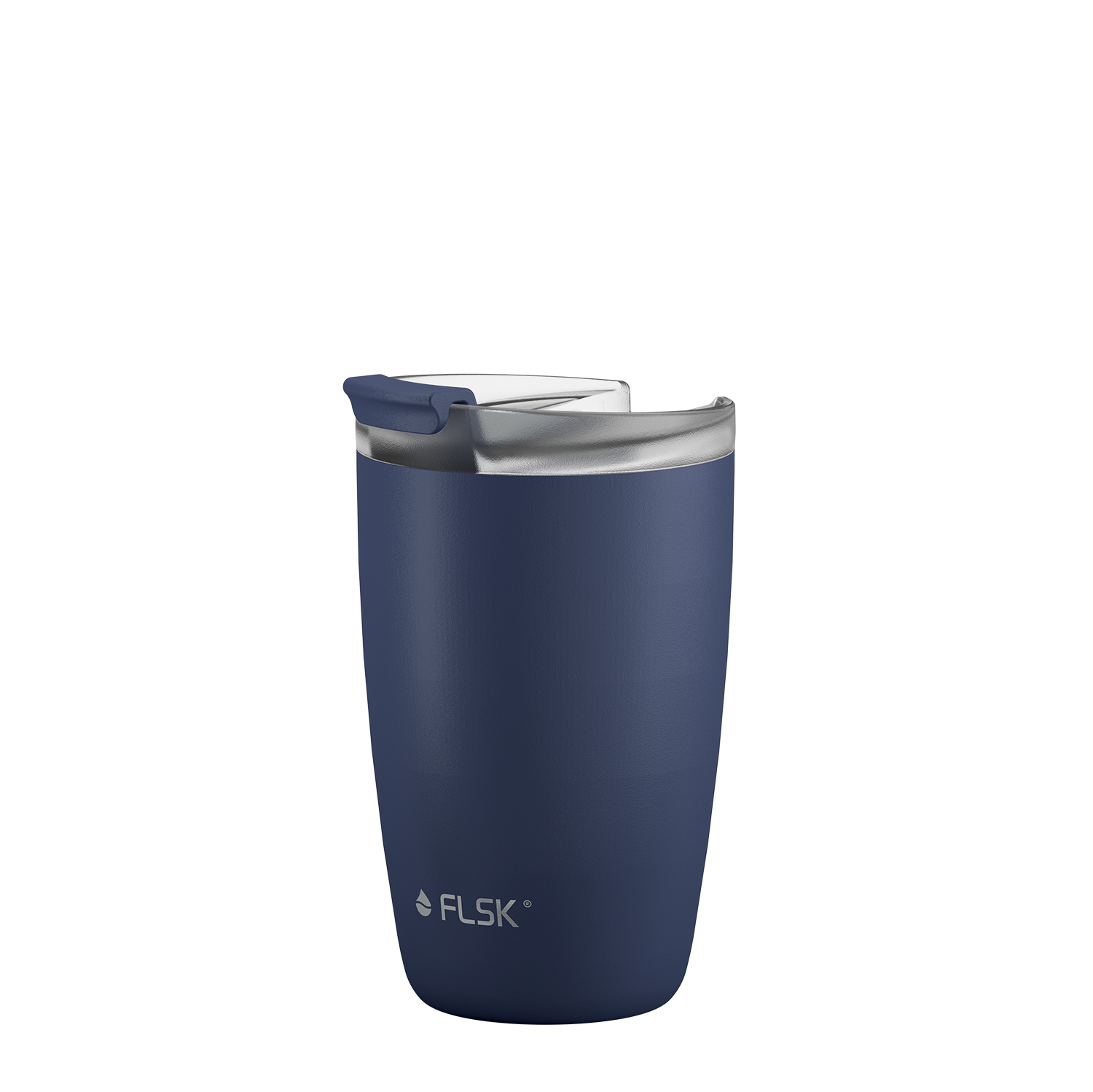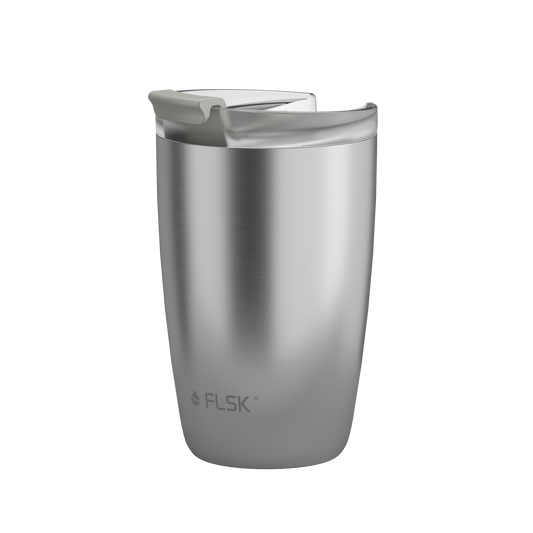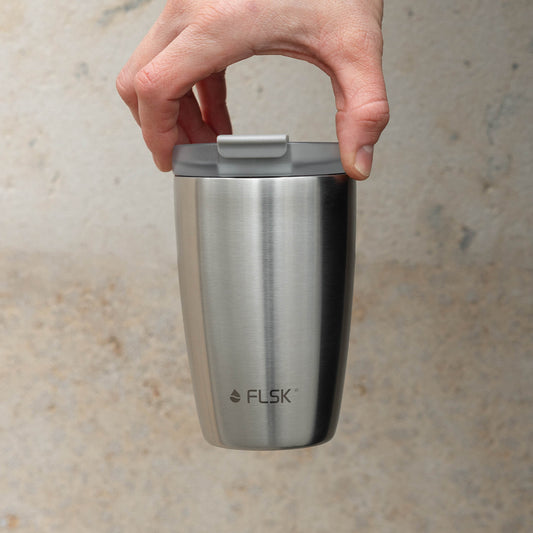Stainless steel – the best material for coffee to go cups, thermal containers and drinking bottles.
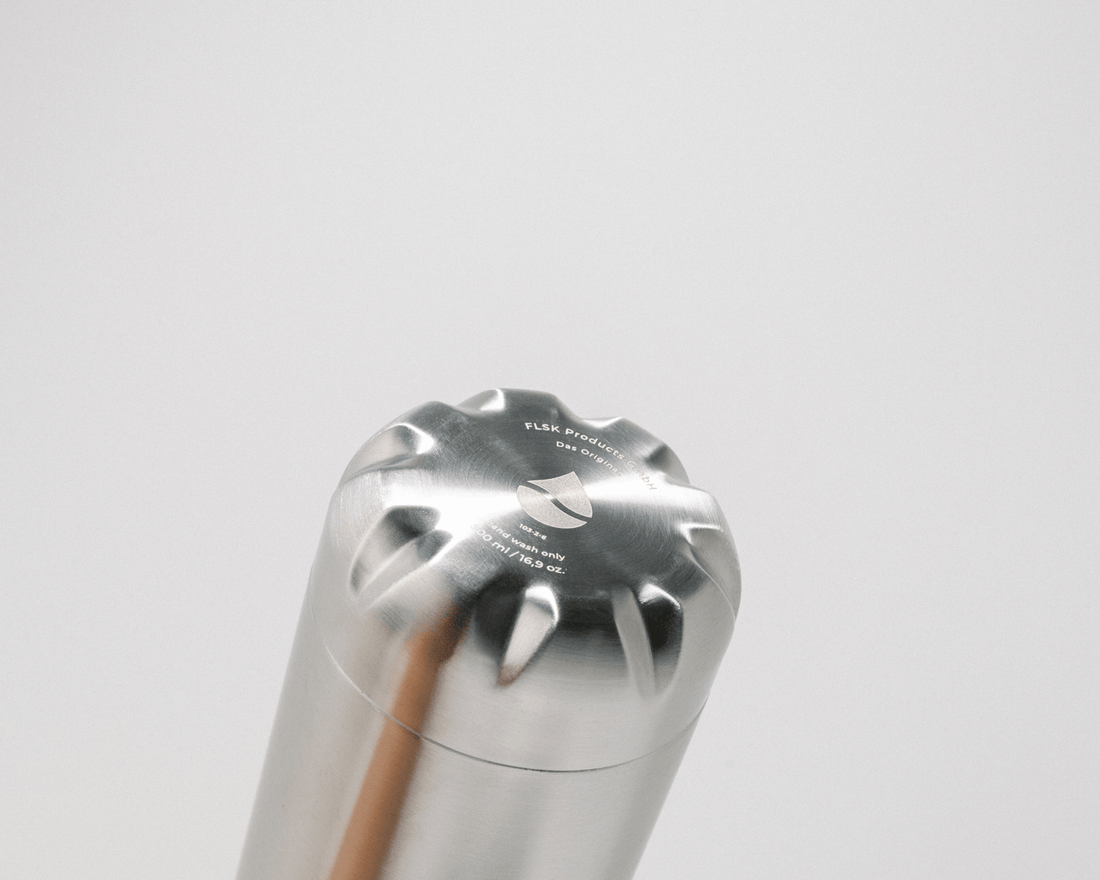
Whether CUP coffee to go, muki Snackpot or FLSK drinking bottle – We want our products to make you happy all round. That's why we only use the very best material for them: stainless steel. This meets the highest demands in terms of weight (ultra-light!), durability (robust!) and function (insulated!).
That alone is convincing, but stainless steel can do even more. The material is good for the environment because it does not release any harmful substances. Find out here how our coffee cups, drinking bottles and snack pots are made and why you can rely on the high quality of FLSK.
Materials in the test.
There are few things that come as close to you as your drinking or eating vessels. They carry everything that will later find its way into your body. Whether it's water, coffee or breakfast - the inner walls are often in direct contact with your food for long periods of time. Reason enough to take a closer look.
There are many different coffee to go cups, snack boxes and drinking bottles on the market. Most are made of Tritan, glass, plastic, aluminum, melamine, ceramic or stainless steel. A coating containing bisphenol A is also often involved.
Who can do what?
-
Glass: In contrast, glass contains no harmful substances and is tasteless. The disadvantage: it is more fragile than all other materials. This makes it unsuitable for many activities. Shatterproof models are considerably heavier.
-
Plastic: Most food storage containers and many inexpensive drinking bottles are made of plastic. This collective term covers various types of plastic. Most of them are not odorless, discolor over time and can release harmful substances into food. The warmer the stored food, the greater the risk of this happening.
-
Aluminium: You should avoid products made of aluminum (including aluminum foil). The consumer advice center speaks of a considerable risk to health. In order to contain its toxic properties, bottles are often coated with a BPA-containing coating. Whether this makes the bottle less harmful is questionable.
-
Stainless steel: Stainless steel has many useful properties. It is stable and unbreakable and therefore durable. At the same time, it weighs very little. Stainless steel containers and bottles do not release any harmful substances and are tasteless. In addition, germs hardly stand a chance with stainless steel. The material is also easy to recycle and therefore protects the environment.
-
Ceramic: Drinking or eating vessels made of ceramic (also known as stoneware) are generally harmless to health and undoubtedly look stylish. However, they do not perform so well when it comes to handling: most people are bothered by the higher weight and the risk of breakage.
-
Bamboo/melamine: Bamboo sounds very natural and sustainable at first. A closer look reveals that most "bamboo" containers are actually made of melamine resin (= plastic) - the bamboo powder is only added as a filler. Melamine has been proven to release its ingredients into food that comes into contact with it. According to the consumer advice center, melamine can cause damage to the kidneys and bladder and is therefore not suitable for storing food.
-
Tritan: This special plastic has been proven not to contain bisphenol A. It also has hardly any taste or odor. Tritan is food-safe, BPA-free, unbreakable, lightweight and robust - but difficult to recycle. This material should therefore only be used in small quantities in long-lasting products so as not to harm the environment.
Conclusion: Glass and ceramic are impractical on the go, plastic, "bamboo" and aluminum are toxic in many cases. In a comparison of materials, stainless steel comes out on top. It also offers the best insulating performance. We are therefore of the opinion that stainless steel is best suited for the manufacture of containers and drinking bottles and therefore use it primarily for our products.
What stainless steel is used in FLSK products?
Not all stainless steel is the same. Depending on the composition, there are different qualities and not all of them are suitable for contact with food. We only offer the highest quality type 304 stainless steel. It is also known as 18/8 stainless steel, which indicates that 18% chromium and 8% nickel were used in its manufacture. This combination offers maximum rust and corrosion protection.
FLSK - sustainable products made of stainless steel.
Stainless steel plays the leading role in all our products. For you, this means that you can simply sit back and relax and enjoy. The CUP coffee to go mug, the muki snack pot and the FLSK drinking bottle are safe for you and, thanks to VICC® technology, are real insulating wonders. We use a copper coating on the inside of the bottle or container that does not come into contact with food.
Construction FLSK drinking bottle:
-
Your favorite bottle is formed by two layers of high-quality type 304 stainless steel, between which there is a vacuum. The inner bottle body is additionally coated with copper.
-
The outside of the FLSK is painted in one of the many great colors, the Classic models are equipped with a robust powder coating.
-
The double-walled thermos flask made of stainless steel is completely tasteless and free from bisphenol A.
-
The lid is also made of type 304 stainless steel. Plastic was used for the stopper and thread and flexible silicone for the seal, which ensures temperature insulation and leak-proofness at this delicate point. Naturally, this material is also tasteless and BPA-free.
Structure muki Snackpot:
-
Your breakfast hero consists of two stainless steel containers that are separated by a centerpiece, the ThermoGuard.
-
The ThermoGuard made of BPA- and BPS-free plastic and silicone closes the double-walled lower container (muki Pot) and prevents temperature exchange between the muki Top and muki Pot. A valve ensures the necessary pressure equalization, especially with hot contents, so that you can always open the muki without any problems.
-
The upper container (muki Top) can also be closed with a lid with a sealing ring so that nothing can leak out.
-
We either paint the outside of the muki with harmless paint or simply leave it in pure stainless steel.
Structure CUP coffee to go cup:
-
The sustainable CUP coffee mug is primarily made of high-quality type 304 stainless steel. There is an insulating vacuum between the inner and outer walls.
-
We have opted for Tritan, or more precisely Tritan copolyester, for the lid and flip-top. This is easy to shape and is stable at high temperatures - perfect for the drinking opening of the CUP! We are aware that the plastic does not degrade naturally. However, we are sure that your CUP will accompany you for many years. The longevity of the CUP compensates for the environmental impact.
-
We use the very best silicone for the seals. The BPA-free, flexible material ensures that the CUP really does seal tightly.
-
On the outside, a beautiful powder coating gives the coffee to go cup its elegant look.
- sold out
- Engraveable.
FLSK coffee cup
350 ml · stainless - all natural
- Engraveable.
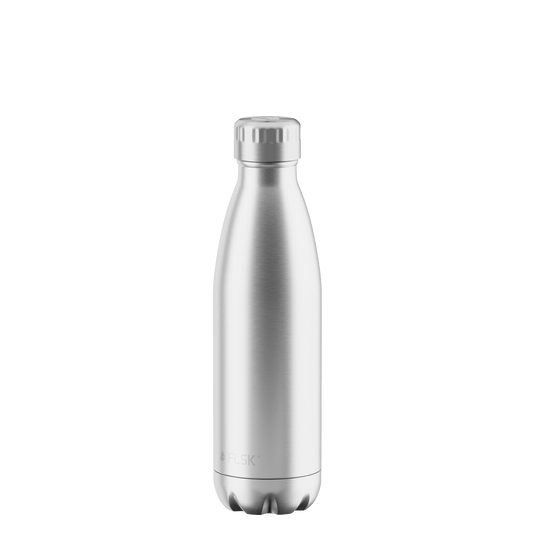
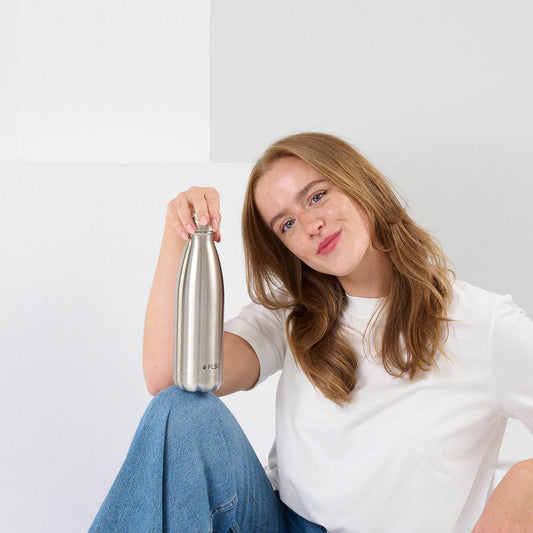
FLSK drinking bottle
500 ml · stainless - all natural
- New.
